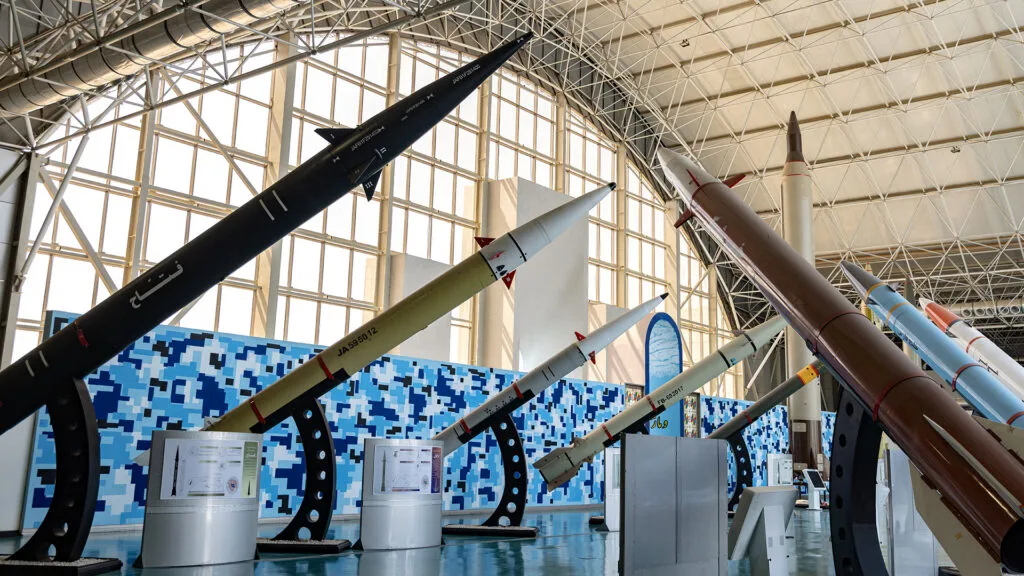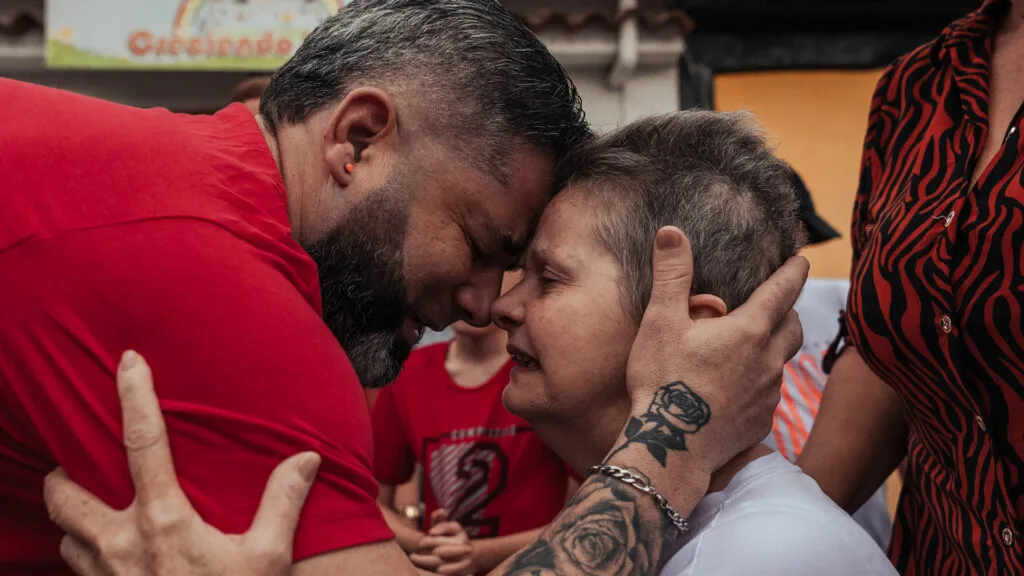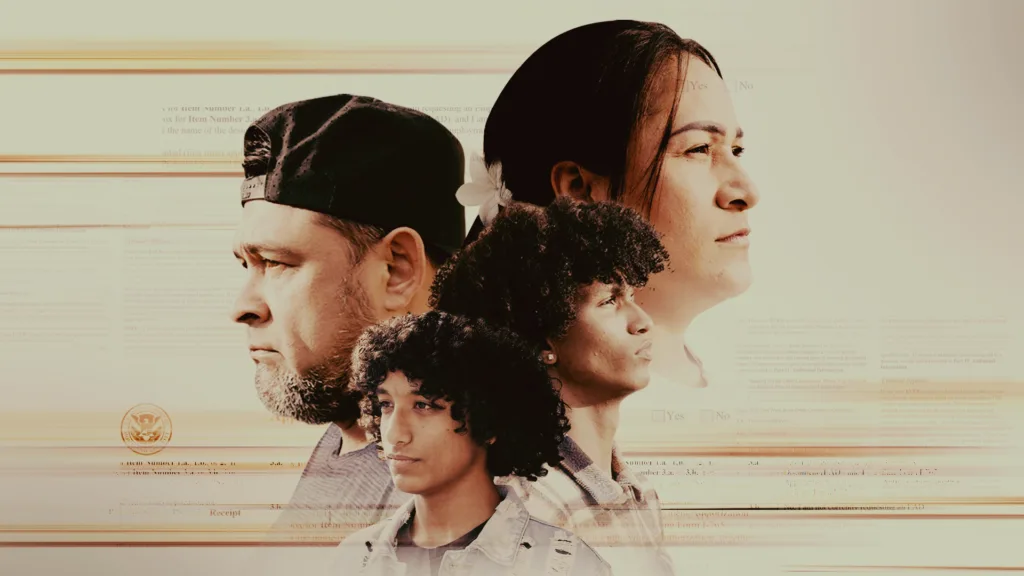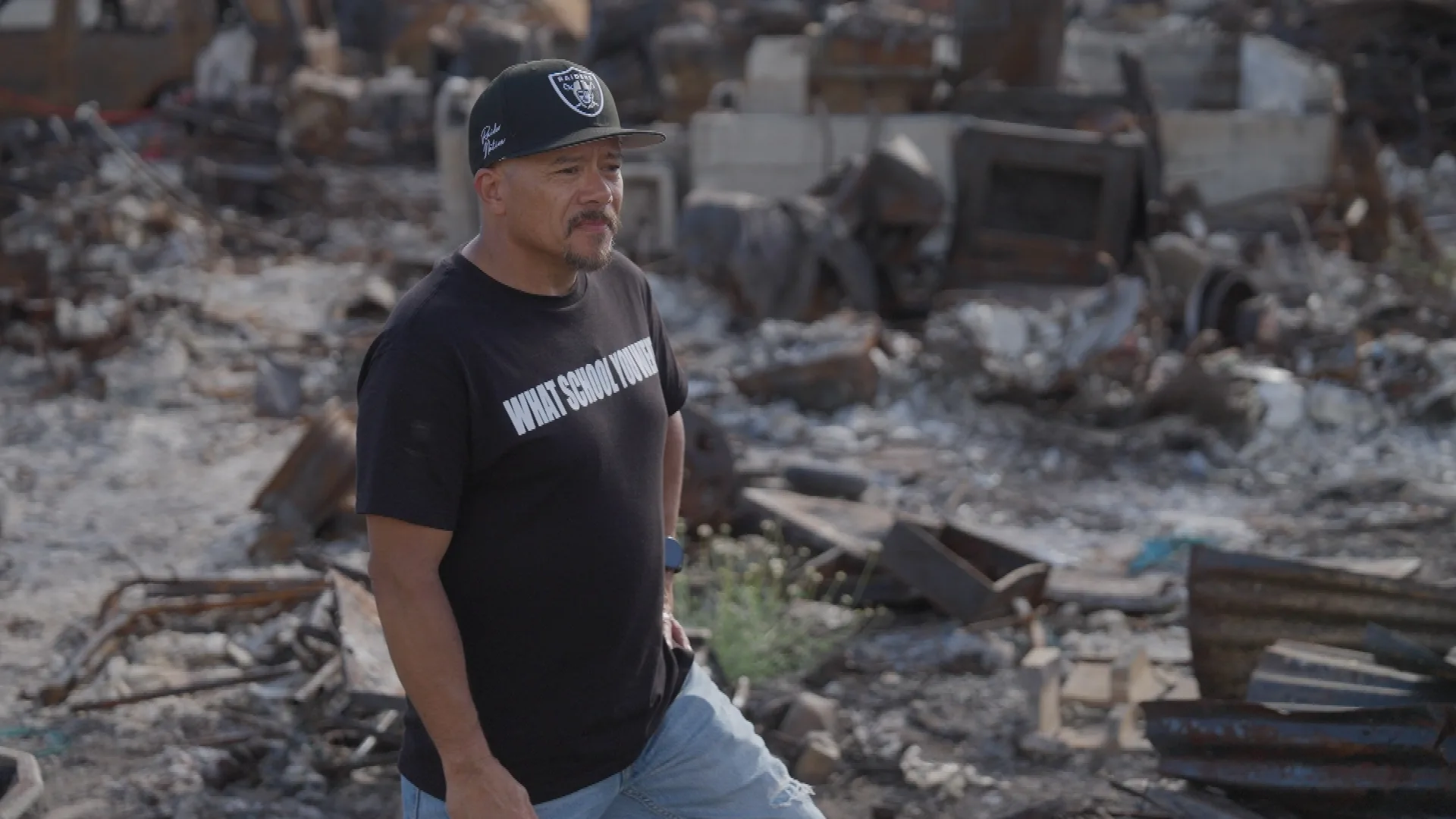Responses From Maui Authorities Regarding the Devastating August 2023 Wildfire
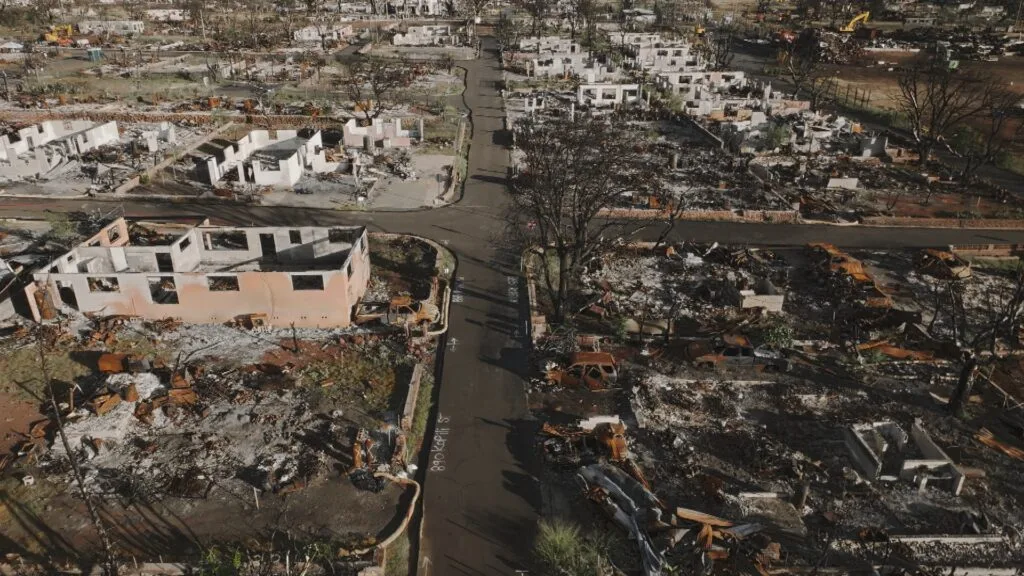
December 17, 2024
Share
In August 2023, the deadliest U.S. wildfire in more than a century reduced much of the Hawaiian town of Lahaina to ashes, killing more than 100 people and displacing thousands. The FRONTLINE documentary Maui’s Deadly Firestorm investigates critical missteps in the response that day — and in the years prior, as the county and state were repeatedly advised to invest more money in prevention and preparedness, and as experts and residents raised concerns.
Hawai‘i Attorney General Anne Lopez released the second phase of the state’s report on the Lahaina wildfire in September 2024. The investigation, conducted by the Fire Safety Research Institute, included analysis of the actions and decisions of a number of state and local agencies. In the wake of the report’s release, FRONTLINE reached out to many of them for comment. Below are their responses.
- Response from Hawaiian Electric Company, Inc. (HECO)
- Response from the County of Maui
- Response from the Maui Police Department
- Response from the Maui Fire Department
Response from Hawaiian Electric Company, Inc. (HECO)
Hawaiian Electric is the state’s largest supplier of power. On the morning of Aug. 8, 2023, one of its downed power lines sparked the fire that would eventually consume Lahaina. This was later confirmed in a report by the Bureau of Alcohol, Tobacco, Firearms, and Explosives. HECO declined FRONTLINE’s request for an interview, but responded to written questions.
Since Hawaiian Electric declined our interview request, we’d like to follow up for comments and/or response to the following findings of the ATF report and the FSRI Phase Two report:
The ATF report stated that the origin and cause of the Lahaina fire is the re-energization of down power lines falling on and igniting unmaintained vegetation in the area.
What is Hawaiian Electric’s response to the finding that Hawaiian Electric’s down[ed] power lines started the fire that eventually burned down Lahaina?
Please see our attached news release from October 2, 2024, which was published on the day the ATF report was released. The main point is this: Early on, we publicly stated that it appeared our equipment sparked a fire on the morning of Aug. 8. The Maui Fire Department and ATF determined that the fire that impacted Lahaina was a later rekindle of that morning fire after the MFD left and was accidental in nature. The ATF largely affirmed the general timeline of events as we first described publicly over a year earlier. We deeply regret that our equipment contributed to the fire that ignited on the morning of August 8, 2023. Confronted by an extraordinary weather event and a chaotic situation, our employees brought their best efforts to their jobs, as they do every day.
In light of the events of August 8, we have looked closely at our procedures and practices, as well as operations that day. The safety of our community is always our highest priority, and we have made many changes to our operations and resilience strategies to ensure we fulfill our commitment to keep the public safe, especially in extreme weather events, which are unfortunately becoming more frequent and severe.
How does Hawaiian Electric respond to criticism that it should’ve followed protocol to switch off the automatic re-closing function of the lines ahead of red flag warnings?
Hawaiian Electric has a longstanding practice of blocking automatic reclosing for breakers and reclosers during red flag warnings and high wind events. That procedure was in place and followed in response to the Red Flag Warning issued by the National Weather Service, and the control room DID block reclosing for transmission circuits powering West Maui and Lahaina.
The FSRI Phase Two report said that there was a lack of clarity and coordination between Hawaiian Electric and MPD on whether it was safe to drive over down[ed] power lines, which contributed to the traffic jams amid the chaos of the fire.
How does Hawaiian Electric respond to the finding that there was a lack of clarity in Hawaiian Electric’s communication with police dispatchers over whether it was safe to drive over down[ed] lines?
I’ve attached our written response to the FSRI Phase Two report that we provided to FSRI and the Attorney General. Section C of that letter provides detail on the issue of communications between first responders and our Maui Electric Control Room. Additionally, we met with the report’s authors on some of the points that we believe needed correction or clarification, including the Phase Two Report’s characterization of communications with first responders.
We strongly believe the characterizations about a “lack of clarity” are inaccurate and unsupported by the multiple recordings referenced by FSRI, including pages 235–236 of the FSRI Phase One Report. The transcriptions of these exchanges, which occurred during a stressful and chaotic event, demonstrate that the Maui Electric Control Room informed MPD/MFD the power was off in Lahaina in all instances when asked (which occurred on at least five occasions). The best practice for first responders to confirm the status of lines or request their de-energization is to call the Maui Electric Control room, as they did on August 8.
Specifically, to your question about driving over downed lines, when the MPD dispatcher indicated that they needed to drive over the lines in order to evacuate, the Hawaiian Electric dispatcher checked with a colleague before definitively stating “Yeah, you can have them run over the lines.” This guidance was correct under the extreme circumstances of that day. although in normal circumstances we tell people to always stay away from downed lines. We stand by our employee who confirmed the accuracy of this response with a colleague.
We have a recording of a call between Hawaiian Electric and MPD, and a transcript of another call. Is Hawaiian Electric able to provide any other recordings or transcripts of communication between Hawaiian Electric and MPD on the day of the fire?
We have reviewed our recordings to see if there is anything that would be helpful to you. While the Maui Control Room and the MPD/MFD dispatch spoke many times during the day, the relevant calls when MPD/MFD dispatch asked if power was out were already transcribed in the FSRI report.
Additionally, are there any significant fire specific initiatives or improvements Hawaiian Electric has made since the August fire that you think we should be aware of? …
Please see our news release dated yesterday which summarizes the actions we have taken to reduce the potential for fire ignition by our equipment by 60%, according to a national fire mitigation expert.
Response from the County of Maui
The County of Maui is led by Mayor Richard Bissen, Jr. and includes the island of Maui, where Lahaina is located. FRONTLINE inquired about a number of the state FSRI Phase Two report’s critiques of the county’s actions before and during the fire — in particular those of the Maui Emergency Management Agency, tasked with leading the county’s response to disasters.
Please see the follow[ing] responses from the County of Maui:
1) Maui County’s years long underinvestment in wildfire prevention, preparedness, and response capacity.
Response: Mayor Richard Bissen and his administration took office Jan. 1, 2023, which preceded the fire by only 7 months. Questions regarding efforts made by past administrations, prior to Jan. 1, 2023, should be directed to the appropriate past authorities.
Since the August 8, 2023, wildfire, Mayor Bissen has implemented the following prevention, preparedness, and response actions:
- Department of Fire and Safety
- Added 29 front line positions
- Increased equipment
- Adopted new technology incorporating the use of AI:
- Portable N5 sensors assist with fire detection; sensors can detect heat and rely on artificial intelligence and smart learning to distinguish anomalies like smoke particles and gases produced by fires
- Alert West provides a situational awareness platform to everyone, including the public, to monitor, respond to, and recover from disasters.
- Completed an After-Action Report with recommendations
- MEMA (Maui Emergency Management Agency)
- New administrator, former MFD battalion chief
- Added 13 positions in MEMA, including positions in Molokai, Lanai, and Hana
- Adopted a Unified Command structure
- Allows for more streamlined communications
- Recent fires offered MEMA the opportunity to demonstrate a more streamlined response effort with increased community information, and a more cohesive approach to emergency response between MEMA, Fire, Police, and other emergency response personnel
- In the process of conducting an After-Action Report, which is scheduled to be completed in December of 2024.
- Maui Police Department
- Continue to evaluate and improve communications and operations to respond to large-scale law enforcement incidents
- Completed an After-Action Report with recommendations
2) Maui County’s insufficient preparation in the days leading up to the fire
Response: It is inaccurate to allude that Maui County was not proactive in emergency preparations in the days leading up to the fire. In fact, FSRI Phase Two Page 15 said that “Maui found itself in the crosshairs of a potential disaster” due to Hurricane Dora and other weather factors. “In anticipation of the hazardous conditions, MEMA partially activated the Emergency Operations Center (EOC) on the evening of Aug. 7, 2023,” FSRI said. In fact, MEMA had been partially activated, with overnight staffing and MEMA partners on standby, days prior due to Hurricane Dora.
3) On Aug 8th, a lack of central coordination and leadership that left first responders under-resourced and disorganized.
Response: From Department of Fire and Public Safety After-Action Report for Maui Wildfires Aug. 7-11, 2023, produced by the Western Fire Chiefs Association (Maui County bold and highlight):
“The largest and most extensive deployment in the history of the County of Maui Department of Fire and Public Safety (MFD) occurred during the unprecedented series of wildfires that began on August 8, 2023. The Pulehu Fire was the largest acreage loss at 3,268 acres, followed by the Lahaina Fire at 2,170 acres, then the Olinda Fire at 1,081 acres, and the Kula Fire at 202 acres. Their collective property loss is estimated at six billion dollars. The Lahaina Fire resulted in the tragic loss of 101 lives, inflicted numerous injuries on both the public and first responders, and caused unparalleled economic, societal, historical, and cultural losses. Nearly every staff member and vehicle resource of MFD on Maui was deployed. The emergency response system did not break but rather it found itself outmatched by the extreme weather and fire conditions. Staff members endured shifts of 36 hours or more and risked their lives in a valiant effort to stop the spread of the fires and save lives.”
4) Criticism that the county hadn’t acted quickly enough to access extra resources from the state on the day of the fire.
Response: Mayor Richard Bissen and other leaders did not turn away ANY state or federal resources the day of the fires. With hurricane-force winds, air support was not an option Aug. 8, 2023. Governor Green signed an emergency declaration that day; likewise, Mayor Bissen signed an emergency declaration that day, both proclamations authorized the use of state and county funds for utilization of every emergency resource available.
Also, there are no formal County inter-island or State mutual aid agreements among fire departments, resulting in a cumbersome and slow process for relocating equipment (MFD AAR).
5) How does the county respond to Hawaiian Electric’s claim that Maui County failed to adequately manage fire prone vegetation on their land, despite known risks?
Response: County land is not at issue in the ATF Origin and Cause report of the 2023 Lahaina fire. Please refer to U.S. ATF Origin and Cause report pages 18 and 19: “The land where the (fire) originated is owned and managed by Kamehameha Schools and was previously controlled by Bishop Estates.”
6) Are there any updates on the lawsuit HECO has filed against Maui County?
Response: As a policy, the County of Maui does not comment on pending litigation.
7) Our film includes criticism that Maui County failed to address growing risks of wildfires on the island following the 2018 fire. While we asked Mayor Bissen about this in his interview, he did not want to comment on a previous administration’s lack of action. However, we would like to ask again if the county could provide any insight into why little action was taken to address resident’s concerns around fire prevention and emergency preparedness that were raised following the 2018 fire.
Response: With journalistic balance and accuracy in mind, it would be important to point out that the administration took office Jan. 1, 2023, and it cannot answer for prevention and emergency preparedness recommendations following the 2018 fire. It would be the responsibility of PBS to find and access officials who were part of previous administrations and/or council leadership who may be able to address 2018 recommendations.
Response from the Maui Police Department (MPD)
Following up on an earlier interview with Maui Police Chief John Pelletier that is featured in the documentary, FRONTLINE producer Christina Avalos sought comment on the state FSRI Phase Two report’s findings that a lack of central coordination and leadership on the day of the fire had left police and other first responders under-resourced and disorganized, and that communications between Hawaiian Electric and the police department over the status of downed power lines provided little clarity on whether it was safe for fleeing residents to drive over them.
Aloha Christina,
The Maui Police Department’s Preliminary After-Action Report, released in February 2024, acknowledged the significant challenges faced during the Lahaina fire and outlined 32 actionable recommendations to improve future emergency response efforts. These recommendations reflect our commitment to continuous learning and adaptation following an unprecedented disaster.
It is crucial to emphasize the heroic efforts of MPD and other agencies during these extreme conditions. Officers worked tirelessly to save lives, often placing themselves in untenable positions while navigating a rapidly changing firefront and widespread chaos. Many lives were saved as a direct result of their courage and selflessness; despite facing personal losses and risks.
MPD acknowledges the communication challenges outlined in the FSRI report, which arose from extraordinary circumstances, including rapidly evolving hazards and limited access to critical information. Appendix A on page 90 of our report features the HECO Downed Power Line Safety Sheet. During recruit training, HECO personnel provide specialized instruction on responding to downed power lines, emphasizing essential DOs and DON’Ts that guide our officers in handling these situations safely and effectively.
Nonetheless, officers prioritized public safety, working to clear safe routes, direct evacuees, and mitigate risks under hazardous and unpredictable conditions. MPD acknowledges that these challenges underscore the urgent need for stronger interagency protocols to address such crises effectively in the future. To that end, MPD has initiated unified command sessions with MFD to strengthen coordination and collaboration in emergency response efforts.
The simultaneous fires across Maui, compounded by extreme weather conditions, stretched all resources to their limits. During the Lahaina fire, MPD officers assumed additional roles to fill critical gaps, doing everything possible to protect the community.
MPD also recognizes the FSRI report’s conclusion that the devastation of the Lahaina fire cannot be attributed to a single organization, individual, or event but to decades of conditions that culminated in this tragedy. Resource limitations were a shared challenge across all responding agencies. Attorney General Lopez’s acknowledgment of the courage and professionalism displayed by emergency personnel underscores the extraordinary actions taken during this crisis.
MPD is deeply proud of its officers, other first responders, and community members for their unwavering dedication during such an unimaginable crisis. We extend our deepest and most heartfelt gratitude to the community for its strength, compassion, and support through which we begin to rebuild, honor those we lost, and find our way forward, for we are Maui Strong!
Mahalo,
Alana
Response from the Maui Fire Department (MFD)
MFD declined FRONTLINE’s request for an interview, but responded to written questions regarding the ATF and state FSRI Phase Two reports, and the department’s preparations and priorities in the wake of a 2018 wildfire near Lahaina that many now see as a warning that went unheeded.
The FSRI Phase Two report considered MFD’s mop-up of the Lahaina morning fire “insufficient”, while the ATF report noted that high winds and dry vegetation created conditions for a re-ignition of the morning fire that ultimately burned down Lahaina.
How does MFD respond to the criticism that firefighters should not have left the morning fire scene given the high winds and dry conditions on August 8th, 2023?
We are aware of the finding (#67) in the FSRI report that concludes that the mop-up operation “appears to have been insufficient.” From a very narrow perspective, this is true by definition, since—as our own investigation concluded—the fire that burned much of Lahaina was a rekindle. However, the implication that the mop-up efforts of our firefighters were somehow lacking is patently false. FSRI themselves maintains (page 144 of their phase 2 report) that our firefighters “adhered to their training and carried it out completely.” We have repeatedly and publicly maintained that our firefighters went above and beyond any reasonable expectation to ensure the fire that morning was extinguished. This is well-evidenced by the following:
- They remained on scene for over five and a half hours after the fire was completely contained, and for several hours after any visible signs of fire were detected. No flames, no smoke, no perceptibly glowing pieces of fuel had been observed for hours before they left. This is more than twice our average post-containment on-scene time for similarly sized fires over the last several years.
- Our firefighters spent extensive on-scene time despite the fact that they were subjected to near-hurricane force winds and the constant danger of falling utility lines and poles. Additionally, there were 10 other 9-1-1 calls for service in the Lahaina district during the time our crews worked this phase of the fire, including downed lines and utility poles throughout Lahaina Town.
- The number of resources devoted to this morning phase of the fire was well above average for similarly-sized fires, and this despite the fact—repeatedly ignored by the media—that arguably the worst fire in state history was already raging upcountry at Olinda.
- While on scene, MFD personnel poured many thousands of gallons of water—enhanced by class A foam—onto the entire visible burn area.
- In addition to the direct efforts to soak the entire fire area with water and foam, multiple dozer lines were placed along the fire perimeter, and of course there was the bypass road to serve as another fire break. These gave additional assurance that the fire area was secure.
No fire department ever considers rekindles acceptable, and MFD is no exception. However, despite our best efforts—extraordinary efforts in this case—they sometimes happen. Nobody regrets this more than our firefighters.
We would also like to note that while there are many items in the FSRI report that are spot on, we take issue with many others. Had we been given the opportunity we could have corrected them. For example, their statement that our personnel may not have recognized that the extreme weather conditions they faced increased the likelihood of flare ups is patently absurd. Of course, they recognized this. No firefighter with the extensive wildland fire experience our personnel possess could fail to do so. That’s why they stayed on-scene working as long as they did, despite no indications of active fire. In addition, their implication that we do not have wildland firefighting training requirements and that our training does not conform to NWCG standards is also just plain false. We incorporate wildland firefighting training, including and far exceeding the S-130 course they refer to—in every recruit training class and as annual training thereafter for all firefighting personnel.
How does MFD respond to criticisms that it has failed to prioritize vegetation management and fire prevention over the years?
This criticism reveals a common misunderstanding of the role the fire department plays in vegetation management, as well as a lack of awareness of MFDs fire prevention efforts. The fire department’s authority is limited to enforcement of the fire code. Landowners are responsible for vegetation management on their respective properties. We inspect properties with potentially hazardous vegetation. We identify code violations, and issue notices of warning followed, if necessary, by notices of violation to the landowners. We can and do levy fines. We can and do—when landowners are non-responsive—hire heavy equipment operators to clear plots of land identified as hazardous. But our capacity and budget for that is very limited.
The bottom line is that genuinely effective—and sustained—vegetation management requires a persistent community-wide effort. MFD has an important role to play by educating the community on best practices and identifying code violations. Landowners, in turn, must accept responsibility for consistently maintaining vegetation in accordance with fire department guidance.
Accusations that the Maui Fire Department has failed to prioritize fire prevention are completely unfounded. MFD has placed an increasing emphasis on fire prevention over the last several years, successfully adding several new fire inspector and plans reviewer positions and a second captain. Additionally, multiple earlier requests to add positions to our bureau were denied by previous iterations of the Maui County Council (fiscal years 2017, 2019 and 2021). Last year we were also denied a Community Wildfire Defense Grant for four additional fire inspector positions to be focused on wildfire prevention and mitigation. Fortunately, the current mayor and council supported inclusion of those positions in this year’s budget. In addition to adding personnel, we pioneered a Wildland-Urban Interface program for Maui County communities that has since become a model for other departments in the state. We recognize there is much more to do, but it is simply false to claim that MFD has not prioritized fire prevention over the years.
Our film includes criticism that County agencies, including the MFD, failed to address Lahaina residents’ concerns about the growing risks of wildfires on Maui following the 2018 fire. How does MFD respond to such criticism? Can MFD provide insight into the challenges or barriers that limited efforts to prioritize fire prevention and mitigation in the years following the 2018 fire?
We would need to know specifically which community concerns you are referring to and how they were communicated to the fire department in order to provide a specific response. But again, it is simply false that MFD has failed to prioritize fire prevention and mitigation since 2018. We respond to (and successfully control) hundreds of wildland fires each year, and are well aware of the risks to our community. We provide our firefighters with the best training in the state and the best equipment in the country to respond to wildland fires and all the many other emergencies we face in our county. Being an island community, our resources are severely limited compared to our counterparts on the mainland, who can routinely muster many times the resources we have available to us.
It’s important to remember that the major fires in 2018 and 2023 were both fanned by near hurricane-force winds in the absence of any rain. No department in the world is able to stop fires under those conditions, let alone a modestly sized department operating on its own in the middle of the Pacific Ocean. So, while the Maui Fire Department is ALWAYS striving to improve every aspect of the services we provide, and while the fires of August 8th showed us many ways, we can do that, we stand by the efforts of our Fire Prevention Bureau and our firefighting personnel, who give their best every day at considerable risk to their own safety.
Related Documentaries
Latest Documentaries
Related Stories
Related Stories
Explore
Policies
Teacher Center
Funding for FRONTLINE is provided through the support of PBS viewers and by the Corporation for Public Broadcasting, with major support from Ford Foundation. Additional funding is provided the Abrams Foundation, Park Foundation, John D. and Catherine T. MacArthur Foundation, Heising-Simons Foundation, and the FRONTLINE Trust, with major support from Jon and Jo Ann Hagler on behalf of the Jon L. Hagler Foundation, and additional support from Koo and Patricia Yuen. FRONTLINE is a registered trademark of WGBH Educational Foundation. Web Site Copyright ©1995-2025 WGBH Educational Foundation. PBS is a 501(c)(3) not-for-profit organization.

